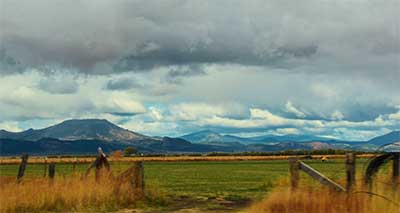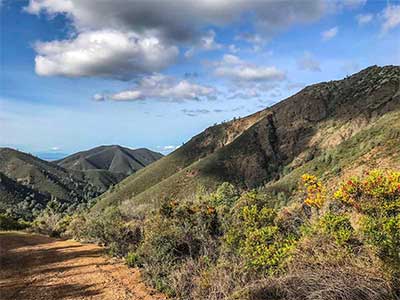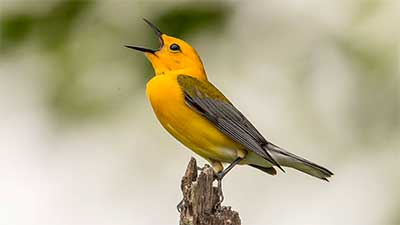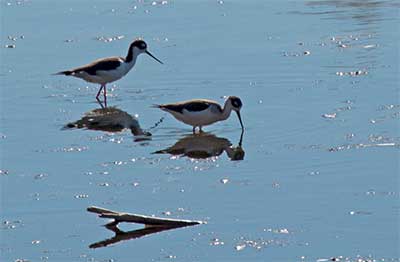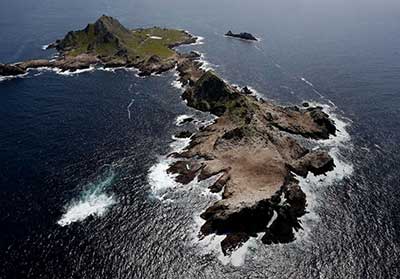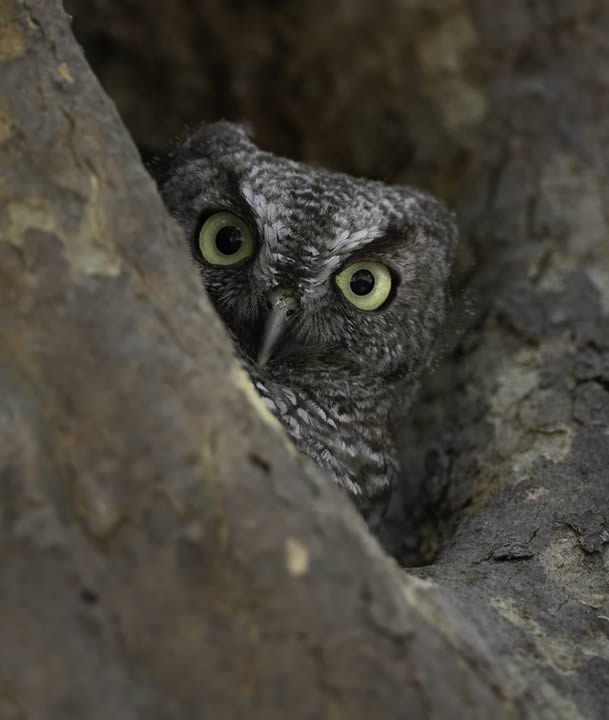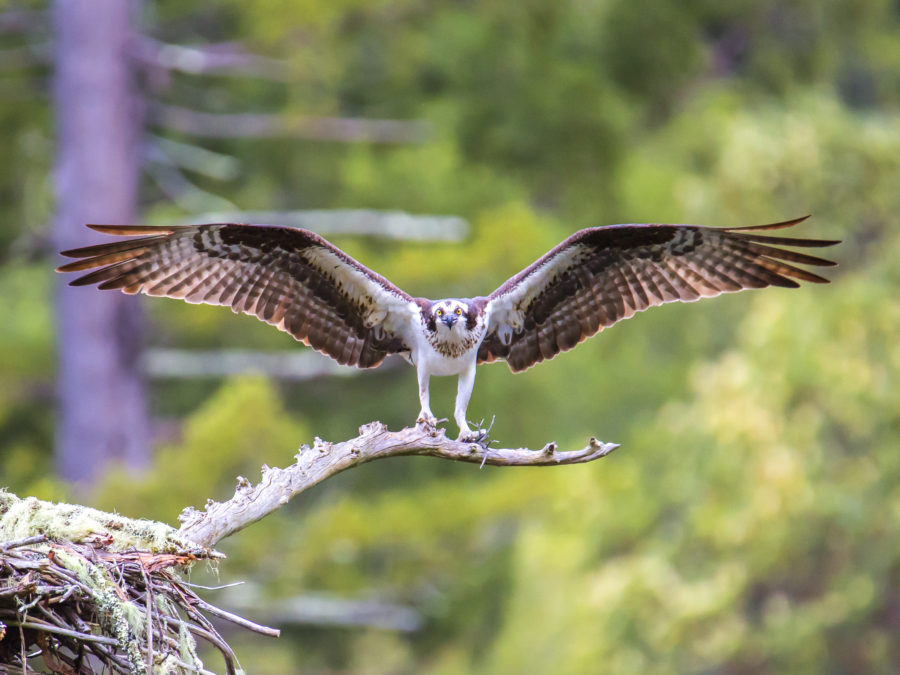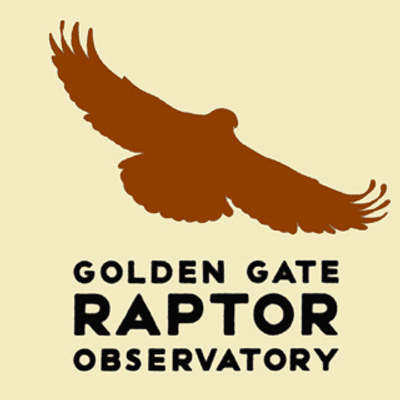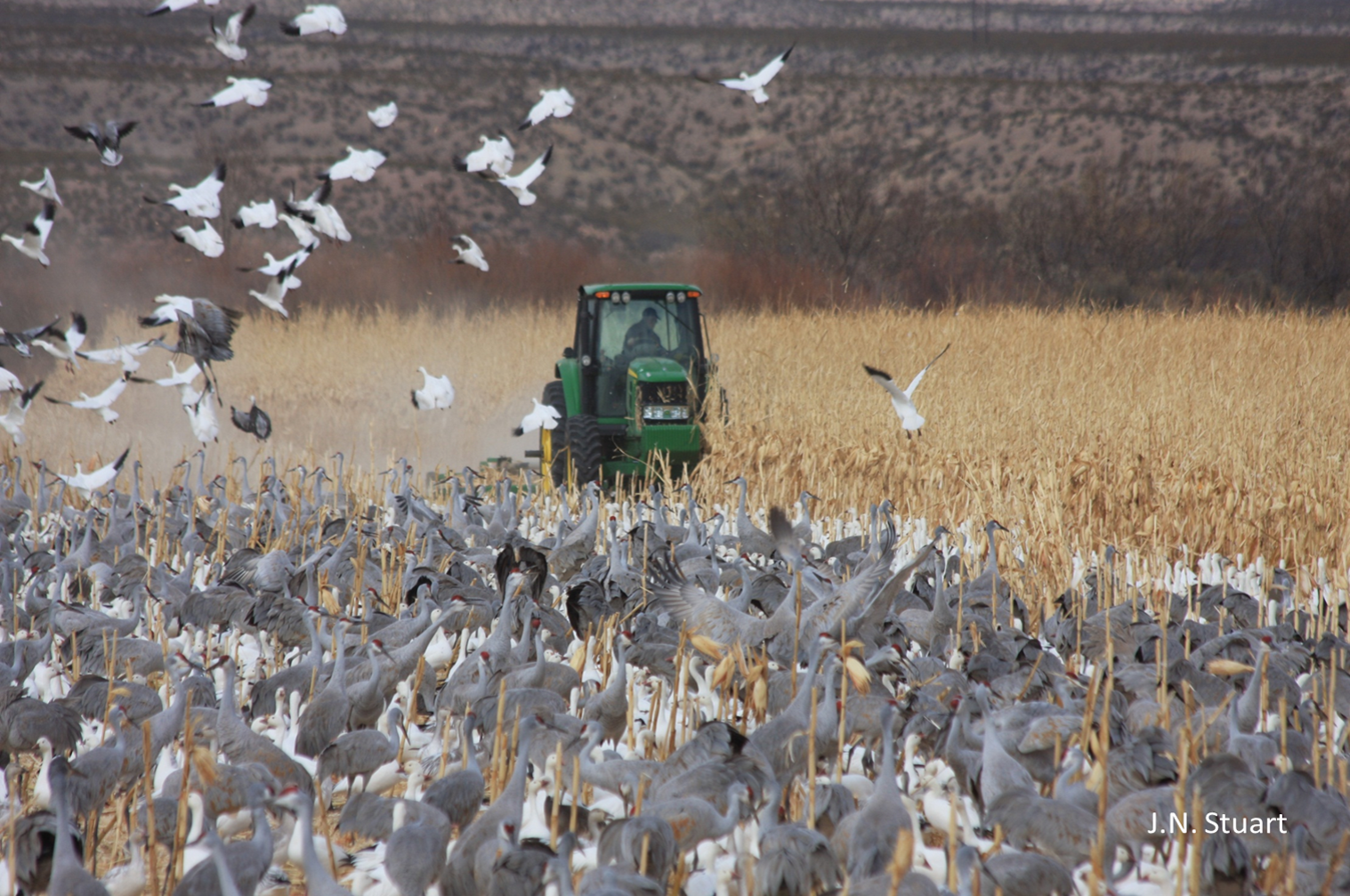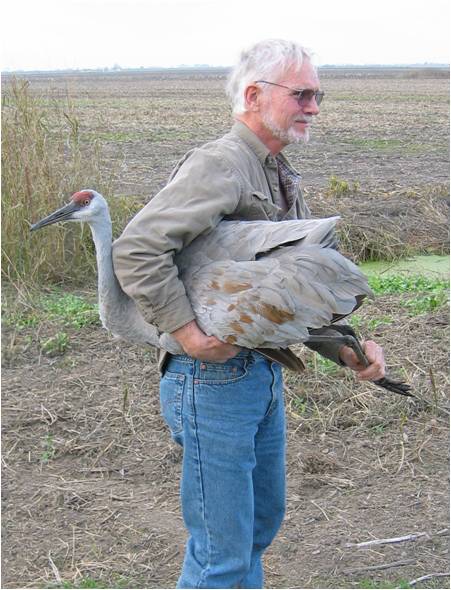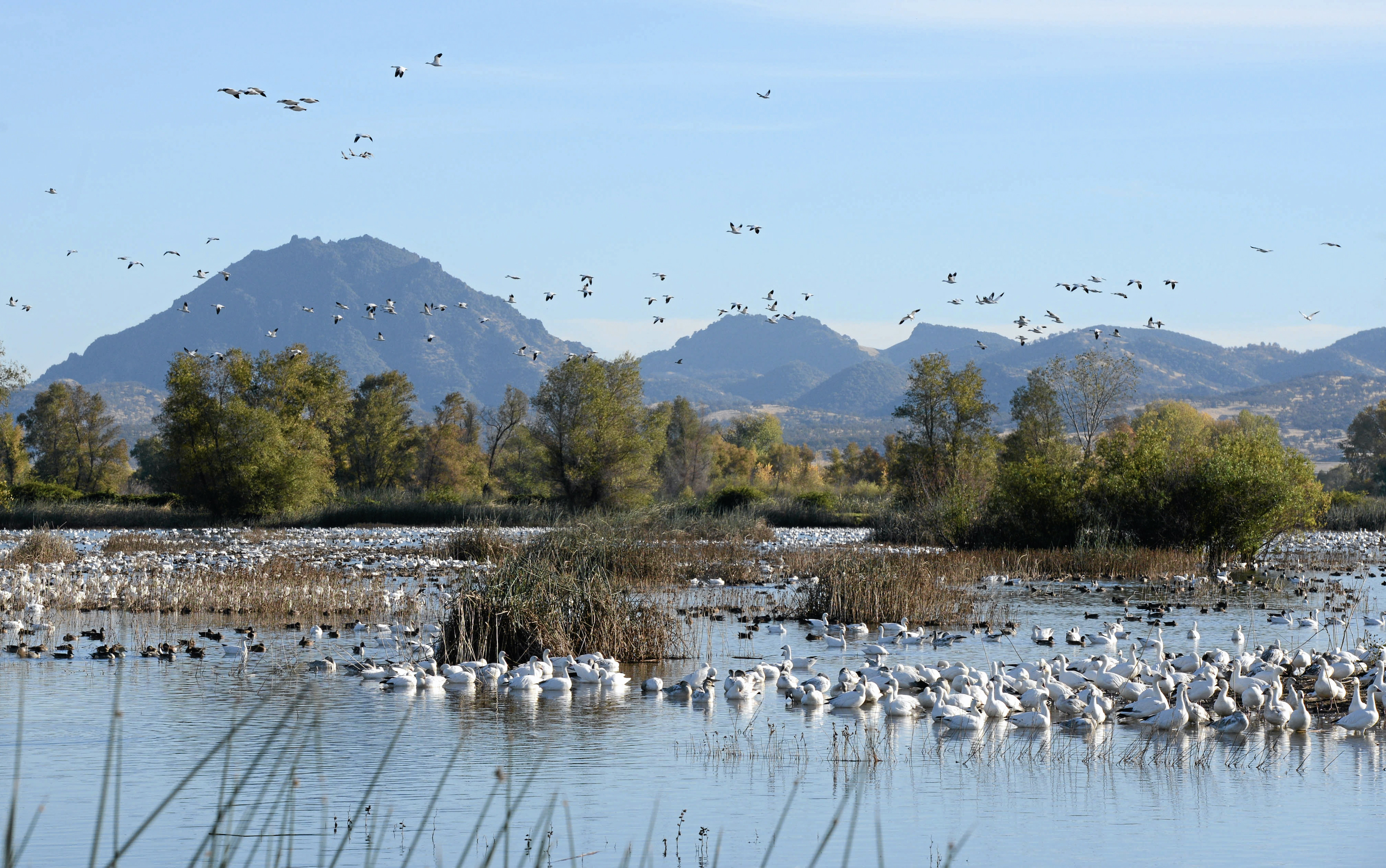Field Trips
Nicasio Reservoir
CA, United StatesLocation: Nicasio, CA Trip Leader(s): Jim White & Bob Battagin Start Date: Saturday, February 15, 2020 Start Time: 8:30 AM End Time: 3:00 PM Description: We will meet at the backstop to the baseball field in the small West Marin hamlet of Nicasio. This is Bob's home "patch" where the riparian, open field, and wooded habitats are good for a nice variety of sparrows, gleaners, and woodpeckers. From town we'll head over to nearby Nicasio Reservoir and make several stops along the shoreline. Many water bird species hang out there while raptors grace the sky, and who knows what will be flitting around in the willows and shrubs that line the shore? In the afternoon we are likely to explore along the northern shoreline of Tomales Bay. Heavy rain cancels. Early Birds will meet at the entrance to Roy's Redwoods on Nicasio Valley Road for a short walk through bay, redwood, oak, and madrone habitats in search of Pileated Woodpecker and other forest denizens. DIRECTIONS: From Highway 101 take the Lucas Valley Road exit. Turn left on Lucas Valley Road and continue approximately 10.3 miles. Keep right on Nicasio Valley Road for 0.5 mile to the town of Nicasio. The baseball field is in the center of town. For GPS, use 1 Old Rancheria Road, Nicasio, the address for the Rancho Nicasio Restaurant.
Birding Eastern Yolo County
CA, United StatesLocation: Davis, CA Trip Leader(s): John Klobas & Sarah Brooks Start Date: Monday, February 17, 2020 Start Time: 8:30 AM End Time: 3:30 PM Description: The low lying agricultural fields, ponds, and refuges of eastern Yolo County are the focus of this trip. In February, bird diversity and numbers are at their wintertime peak, and we will seek the spectacle of those numbers. Burrowing owls are among the most threatened of California's owls. We will look for this small, ground dwelling owl in the Davis area before heading to West Sacramento's Bridgeway Pond. Sandwiched between a suburb, mega warehouses, and the deep-water shipping channel, this pond is the winter home of Blue-winged Teal and Cinnamon Teal, Sora, raptors, and perhaps some diving ducks as well. This pond was the home for several months of last year's mega rarity, a male Garganey duck, which was seen by a few members of the trip last February, a week before it was positively identified. Next we will seek habitat for Wood Ducks near the Sacramento River. Wood Ducks, usually a restive, shy species, are not as skittish here as they are in hunting areas. Our location for lunch is weather dependent, but the afternoon will find us heading back towards Davis, finishing our day at the Vic Fazio Wildlife Area (Yolo Bypass) where we will enjoy the waterfowl and water bird spectacle. In the event of flooding in the Bypass, we will bird other areas around Davis. Directions: We will meet in Davis in the El Macero Center (Nugget Market and Starbucks) to organize the day and introduce the itinerary. Exit I-80 at Mace Blvd. in Davis, turn left on the frontage road, then a quick right to Mace Blvd., then an immediate right into the El Macero parking lot. We'll be in between Nugget Market and Starbucks. Please carpool if at all possible. A smaller number of cars allows us to be much more opportunistic and lessens our carbon footprint. Allow 2 hours for an early morning winter drive to Davis from most North Bay locations. Heavy rain cancels. Dress in layers. Include rain gear. Binoculars are a must and bring a scope if you have one. This is a car-oriented trip with minimal walking. Wear shoes that can withstand muddy conditions. Bring lunch, snacks, and drinks. Nugget is a full-service market that opens at 7 AM. Let's go birding!
Presidio and Crissy Lagoon
CA, United StatesLocation: San Francisco, CA Golden Gate National Recreation Area Trip Leader(s): Juan Garcia Start Date: Saturday, February 22, 2020 Start Time: 8:00 AM End Time: 3:00 PM Description: Within the range of a moderate walk, several extensive habitat restorations can be seen up close, with several more works-in-progress. Here's an opportunity to celebrate these vital projects and contemplate their success. Beginning at Inspiration Point, we'll slowly wind our way down Tennessee Hollow, with its carefully restored riparian and grassland habitat, and hold a sit-spot at El Polin Spring, looking for visiting warblers, among others. Next, we'll trace the path to lower Tennessee Hollow, which affords good views of slow-flowing and pooling sections. We'll proceed to Crissy Lagoon via the now well-known Tunnel Tops, which will soon form an extension of the native plant corridor. The Lagoon itself offers habitat for shorebirds and waterfowl, as well as a good mixed gull flock. We'll walk the circuit of the Lagoon, stalking warblers in the willows and seed eaters foraging on Crissy Field. A small nature reserve on the beach side protects habitat for sparrows, phoebes, and a small wintering group of Snowy Plover. We'll end with telescopic views of San Francisco Bay, with its loons, grebes, cormorants, terns, scoters, and so on. Restrooms and drinking water will be accessible at several points, but you should bring snacks and or lunch. As usual in the Bay Area, wear layered warmth and bring sun protection. A birding scope will be provided, but please bring binoculars. Meet at 8 AM at Inspiration Point Link: https://www.predisio.gov/places/inspiration-point-overlook
Rodeo Lagoon
CA, United StatesLocation: Marin Headlands Trip Leader(s): William Legge & David Wiechers Start Date: Wednesday, February 26, 2020 Start Time: 7:30 AM End Time: 12:00 PM Description: This trip launches our new program featuring eight field trips to Rodeo Lagoon. These trips will focus on migration with four monthly field trips planned for the spring migration and four for the autumn migration. On this date William and David promise to assist with gull identification, which proves challenging for many birders. We will also be targeting migrant ducks, grebes, loons, gulls, and wintering passerines such as Fox Sparrow, Hermit Thrush, and Say's Phoebe. Join us for a Sea Watch at 7:30 AM or arrive later at 8:30 AM for a circuit of the lagoon. DIRECTIONS: Head south on Hwy 101 and take the last Sausalito exit just before the Golden Gate Bridge. At the exit stop sign, turn right and go under the freeway, then follow the road down to the left. Within 300 feet turn left at the sign to the Marin Headlands (This is the only available left turn before you begin the descent into Sausalito). You should see the tunnel with the five-minute light. Proceed through the tunnel on Bunker Road to the Rodeo Lagoon Parking Lot at the end and meet by the bridge over the channel to the beach.
Pacheco Pond
CA, United StatesLocation: Novato, CA Trip Leader(s): Bob and Sande Chilvers Start Date: Thursday, March 5, 2020 Start Time: 8:30 AM End Time: 12:00 PM Description: Join us again at Pacheco Pond where we'll be watching for signs of resident breeding birds beginning the nesting season. There aren't many eBird reports from Pacheco Pond for this time of year, so help us fill in the gaps in our knowledge and compile a day list to be shared online. Pacheco Pond doesn’t have the glamour of many of our Marin birding locations, but it does have the distinction of being "the best publicly accessible freshwater'ish pond in Novato with adjacency to other bird-rich areas." (Thank you, Jack Gedney.) The area provides habitat for a variety of ducks, Black-crowned Night Heron, Common Gallinule, Sora, and Virginia Rail. The adjacent non-native eucalyptus provides additional habitat for both songbirds, egrets, and a number of raptors including Peregrine Falcon. Thank you, Bob and Sande, for continuing as our competent and friendly guides on this popular monthly walk. We welcome bird enthusiasts of all levels and help each other to find and identify the birds. The area around Pacheco Pond is mostly flat, but we will be walking across some rocky, uneven surfaces. Dress in layers and bring binoculars, scopes, and water. Heavy rain cancels. DIRECTIONS: Take the Bel Marin Keys Blvd exit from Highway 101. Travel east on Bel Marin Keys Blvd for 2 miles passing through a commercial industrial section until arriving at a small parking area on the right, which faces the pond. We will meet in the parking area and walk to the trail a short distance up the road.
Stafford Lake
CA, United StatesLocation: Novato, CA Trip Leader(s): Bob Atwood Start Date: Saturday, March 7, 2020 Start Time: 9:00 AM End Time: 12:00 PM Description: Located west of Novato, Stafford Lake is a beautiful but less birded area that is productive for waterfowl and raptors. Approximately 172 species of birds have been spotted at Stafford Lake throughout the years with our group likely to see a considerable variety of the resident as well as wintering birds. The county park has facilities and plenty of parking. The mostly level terrain and water views make for pleasant birding as we walk around a portion of the lake and the surrounding area. Heavy rain cancels. DIRECTIONS: From Highway 101 in Novato, take the exit for San Marin Drive west 2.9 miles. Turn right onto Novato Blvd. and follow for 2.6 miles. The park is on the left. Turn left after the gatehouse and travel to the parking lot. Entrance fee is $5 per vehicle. If you have a Marin County library card, you can check out a free library park pass from any Marin County Free Library.
Sierra Valley Overnight Trip with Rich Cimino – MAS Chapter Supporting Membership Required
Sierra Valley CA, United StatesLocation: Highway 89 North of Truckee Trip Leader(s): Rich Cimino Start Date: Thursday, June 25, 2020 End Date: Saturday, June 27, 2020 Start Time: End Time: Description: REGISTRATION OPENS MARCH 2. The valley floor of this popular Sierra birding destination is covered with sagebrush scrub, broken by freshwater marshes, grasslands and riparian woodland. On Friday we will bird the valley floor and western portion of Sierra Valley where the headwaters of the Feather River support freshwater marshes. The western edge of the valley is made up of coniferous forest and chaparral. On Saturday morning we will bird the Yuba Pass area, which is high Alpine habitat. This portion of the trip requires walking for three hours while we bird. For a list of birds seen in this Important Bird Area (IBA), check out both Plumas and Sierra County checklists at: https://ebird.org/hotspot/L1007569?m=6&yr=last10&changeDate=Set https://ebird.org/hotspot/L109258?m=6&yr=last10&changeDate=Set Many of the birds on these lists will be present at the time of our visit. This popular trip will fill quickly, so sign up right away if you are interested in joining our group. The trip will be limited to 15 participants. When reserving your lodging, be mindful of the distance you'll need to travel to meet the group each morning in Sierraville. Although there is no charge, you must be a Chapter Supporting Member of Marin Audubon to participate. To sign up for the trip, email Jeanine Starritt at . Be sure to provide your name(s), email address and phone number. If you are not yet a Marin Audubon Chapter Supporting Member, please sign up at www.marinaudubon.org prior to registering for this trip. Participants will be responsible for their own lodging or camping arrangements in the Sierraville, Truckee or Portola areas. Plan to arrive in the area on the evening of June 25. Those confirmed on the trip will receive additional information and instructions prior to the trip.
Best of Mitchell Canyon with Bruce Mast
Mitchell Canyon CA, United StatesMitchell Canyon, on Mount Diablo’s northern flank is one of the best examples of mid-elevation riparian habitat in the East Bay. Along with numerous avian residents, spring brings an assortment of neotropical migrants including warblers, vireos, flycatchers, tanagers, grosbeaks, and hummingbirds. The canyon is also famous for its spring butterflies and wildflowers, including the rare endemic Mount Diablo globe lily (also called fairy lantern).
Spring Bird Songs with Lisa Hug (3 Classes) – Registration Now Open
Five Brooks / Big Rock / Mount Burdell , United StatesSpring is the best time of year to hear and learn bird songs. Males are full of hormones and bursting with song. Many neo-tropical migrants are returning and vying for mates and territories. It is a very exciting time of year, so even if you dislike getting up early, it might be worth your while to join one or more of these classes. Participants will be asked to stay quiet to enable us to listen to the myriad of bird sounds. Wear comfortable walking shoes and bring layered clothing, water, binoculars, field guides, and snacks.
American Canyon Wetlands with Lucas & Mark Stephenson
CA, United StatesYouth Birder Lucas Stephenson will lead this fun trip to the American Canyon Wetlands that hosts species from the unique habitats found in American Canyon: Grassy Fields and Eucalyptus Groves, to the Tidal Mudflats and the Bay. The Wetlands are home to a diverse number of birds from Merlins and Peregrine Falcons, to Burrowing Owls, Marsh Wrens, Sora and Virginia Rails, migrating Black-bellied Plovers, Long-billed Curlews, Barrow’s Golden Eyes, and possibly even a Long-tailed Duck! Last year with Lucas, our group spotted an impressive 88 species! As per usual with Lucas and his Dad, we will be on the lookout for new local species of interest.
Spring Bird Songs with Lisa Hug (3 Classes) – Registration Now Open
Five Brooks / Big Rock / Mount Burdell , United StatesSpring is the best time of year to hear and learn bird songs. Males are full of hormones and bursting with song. Many neo-tropical migrants are returning and vying for mates and territories. It is a very exciting time of year, so even if you dislike getting up early, it might be worth your while to join one or more of these classes. Participants will be asked to stay quiet to enable us to listen to the myriad of bird sounds. Wear comfortable walking shoes and bring layered clothing, water, binoculars, field guides, and snacks.
Spring Bird Songs with Lisa Hug (3 Classes) – Registration Now Open
Five Brooks / Big Rock / Mount Burdell , United StatesSpring is the best time of year to hear and learn bird songs. Males are full of hormones and bursting with song. Many neo-tropical migrants are returning and vying for mates and territories. It is a very exciting time of year, so even if you dislike getting up early, it might be worth your while to join one or more of these classes. Participants will be asked to stay quiet to enable us to listen to the myriad of bird sounds. Wear comfortable walking shoes and bring layered clothing, water, binoculars, field guides, and snacks.
Farallon Islands Boat Trip with David Wimpfheimer – A Few Spaces Still Available
Clipper Yacht Harbor, Sausalito Sausalito, CA, United StatesJoin us for our annual day of seabird and marine mammal watching as we head out to the Farallon Islands and offshore waters. Naturalist David Wimpfheimer will be our guide once again aboard Jim Robertson’s power catamaran Outer Limits. Last year’s sightings included both Humpback Whales, Laysan and Black-footed Albatross, Tufted Puffin, Pink-footed, Sooty, and Buller’s Shearwaters, Pomarine and Parasitic Jaegers, Rhinoceros and Cassin’s Auklets, and more. We will get a close-up look at the islands and hear about their interesting natural and human history. This is a trip that both experienced and first-time birders and nature lovers will enjoy.
Online Birding: Diurnal Raptors of Marin
Zoom Event CA, United StatesZoom Program - CLICK HERE to signup
Start Date: Wednesday, October 7, 2020
Time: 7 PM to 8:30 PM
With Shannon Burke - Marin County Parks Naturalist
From colorful kestrels to enormous eagles, diurnal raptors are charismatic birds of our landscapes. Perched at the top of the food web, these species take advantage of different habitats and use various strategies to hunt. We’ll explore how these behaviors, along with distinguishing field marks, can help in identifying our local species as we discuss some of the life history stories that make each unique.
Marin County Parks Naturalist Shannon Burke, known for her expertise in a variety of natural history fields (some animal, some vegetable), has a special interest in raptors and worked for a number of years as a volunteer for the Golden Gate Raptor Observatory. She always combines her considerable field identification skills with substantial knowledge of animal behavior to create outstanding programs.
Photo Credit: Elyse Omernick
Online Birding: The Biology of Owl Vocalizations – What ARE They Talking About?
Zoom Event CA, United StatesZoom Program - CLICK HERE to sign up
Start Date: Wednesday, October 14, 2020
Time: 7 PM to 8:30 PM
With Joe Mueller
The sounds of owls talking late into the night may seem mysterious, but there are solid biologically accepted reasons for their diversity of vocalizations. The variation has much to do with how owls have evolved, becoming the dominant nocturnal avian predators. Join Joe for an introduction to owls with a focus on the exploration as to why owls have evolved such a plentiful repertoire of hoots, howls, wails, screams, whistles, yelps, shrieks, barks, whines, and whinnies.
As a Professor of Biology for 30 years Joe has been teaching a rich diversity of courses ranging from ornithology to marine invertebrate zoology as well as leading field courses from Alaskan tundra to Costa Rican Tropical Rain Forests. His teaching style has developed from a view of life focused on systems thinking and how interrelationships make up the essential nature of life. He developed and coordinates the Natural History Program at College of Marin and is the 2008 recipient of the Terwilliger Environmental Education Award.
Photo Credit: Elyse Omernick
Online Birding: The Natural History of Osprey in Marin County: Colonization and Population Growth
Zoom Event CA, United StatesZoom Program - CLICK HERE to signup
Start Date: Wednesday: October 21, 2020
Time: 7 PM to 8:30 PM
With Jules Evens
Since the establishment of a nesting colony of Osprey at Kent Lake beginning in the mid-1960’s, the local population grew exponentially, at least over the next three decades. Beginning in the mid-1990’s, the numbers leveled off and then began to decline somewhat. This presentation will trace the dynamics of that founding population, discuss the reasons for its local decline as well as the population’s expansion in the greater Bay Area.
Born and raised in New England, Jules lived with his family and worked as a wildlife biologist in western Marin County for over three decades. He currently lives in coastal Oregon but returns to Marin for field work and friendships. His primary research focuses on tidal wetlands, avian population trends, and species at-risk. He has written three California Natural History Guides: The Natural History of the Point Reyes Peninsula (3rd ed. 2008), An Introduction to California Birdlife with Ian Tait (2005), and Birds of the Northern California Coast with Rich Stallcup (2014).
Photo Credit: Dave Strauss
Online Birding: Red Tales, Hawkish Behaviors, and Migratory Stories – Revelations from the GGRO’s First 35 Years
Zoom Event CA, United StatesZoom Program - CLICK HERE to signup
Start Date: Wednesday, October 28, 2020
Time: 7 PM to 8:30 PM
With Allen Fish
Each fall, tens of thousands of birds of prey funnel overhead at the Marin Headlands, the largest known raptor migration along the Pacific Coast. In the early 1980’s a few Marin citizens started conducting counting and banding studies on the flight, studies that drew many volunteers and soon evolved into the Golden Gate Raptor Observatory, a full-fledged program of the Golden Gate National Parks Conservancy in cooperation with the National Park Service. Today, the GGRO is part of a broad program of community science and ecological stewardship coordinated by the Parks Conservancy, including ONE TAM, and the Native Plant Nurseries.
Now 35 years old, with four staff and 240 volunteers, the GGRO is the only barometer of migrating raptor populations in California, providing population trends and migration locations for up to 19 species of hawks, kites, falcons, eagles, osprey, vultures, and harriers. Along with keeping an annual pulse on California’s raptors, the GGRO has forged long-term relationships with local biologists – to study a range of stressors on the wild birds of prey we have in hand, among them, diseases, parasites, rat poisons and other toxins.
Come join us for an entertaining discussion of the GGRO, Migratory Story and all things raptor, as GGRO director Allen Fish delves into the best stories from Hawk Hill, as well as the unique meaning of 2020 for long-term bird monitoring. For many Bay Area birders, Allen needs no introduction. The GGRO’s first director, he was hired in 1985. With a background in evolutionary ecology and conservation biology from UC Davis, Allen has a particular interest in bird population responses to urban development, climate change, and other human pressures. His presentations always manage to inform and entertain audiences. This program will no doubt continue that tradition.
Online Birding: Improving Habitat for Central Valley Waterbirds
Zoom Event CA, United StatesImproving Habitat for Central Valley Waterbirds
Wednesday, November 11, 2020
7 PM to 8:30 PM
With Khara Strum
Sign up for the Zoom Webinar HERE
Did you know that over 50 percent of the potential habitat for migratory waterbirds in the Central Valley is also agricultural land? Farm fields might not be the first thing that comes to mind when you think of waterbirds, but here in California farmland is essential to supporting the millions of waterbirds that call the Central Valley home. Join Khara Strum for a tour of some of the ways Audubon California is working with farmers and private landowners to support migratory waterbirds in the Central Valley.
Khara Strum is a Conservation Project Manager for Audubon California. For the last decade, Khara has worked with agricultural industry groups, private landowners, and government agencies to increase the habitat value of farmland for birds and other wildlife in the Central Valley of California.
Sandhill Crane Populations in California’s Central Valley
Zoom Event CA, United StatesWednesday, December 2, 2020
7:00 PM to 8:30 PM
With Gary Ivey, Ph.D.
CLICK HERE to register for the Zoom Event
While only occasionally seen in Marin, both breeding and wintering Sandhill Cranes can be found in greater abundance in California’s Central Valley and the broader Pacific Flyway. All things Sandhill Crane related will be covered in this program: some history, their status, their life history, migration routes, and breeding areas of the three subspecies that use our state. Dr. Ivey will also discuss where and when you can enjoy them during their winter season.
Dr. Ivey is an undisputed expert who has concentrated his work for over 35 years on waterbirds, waterfowl, and wetland conservation. Sandhill Cranes were the focus of both his Master’s Thesis and Ph.D. He currently serves as a Research Associate with the International Crane Foundation (Saving cranes and the places where cranes dance!) and works to further conservation of cranes, Trumpeter Swans, and other waterbirds in Western North America.
Refuge – a Film from Gray Lodge Wildlife Area
Zoom Event CA, United StatesDecember 9, 2020
7:00 PM to 8:30 PM
With Director Mark Lipman
CLICK HERE to register for the Zoom Event
We invite you to immerse yourself in the sights and sounds of this dawn-to-dusk portrait of the Gray Lodge Wildlife Area in Gridley. When he first visited Gray Lodge in 2011, Director Mark Lipman was not a birder but was deeply touched by the beauty of the place and the symphony of bird sounds. On the night of our program, Mark will briefly introduce his film and be available for the Q&A session afterwards.
Mark created this beautiful film and sound recording over a period of three winters. His program is vastly different from our previous webinars and does not offer a classroom-type-learning presentation. Rather it offers an aesthetic, meditative experience that we hope you will enjoy as you head into the busy holiday season.
This forty-five minute film is intentionally slow paced with no talking, although we may have a birding expert quietly identify the varied birds as they appear on the screen CLICK HERE access a Bird List in advance of the program. Then you can bird your way through the film! We recommend that you view this film on your largest available screen as Mark has created a three-channel video with surround sound, and viewing would be optimum on a large screen.
Mark has worked as a documentary filmmaker for over thirty-five years, exploring a wide range of subjects from domestic violence to human sexuality to affordable housing and community organizing. His films have been broadcast nationally on public television and won numerous awards. Refuge is his first foray into video installations and the natural world.
